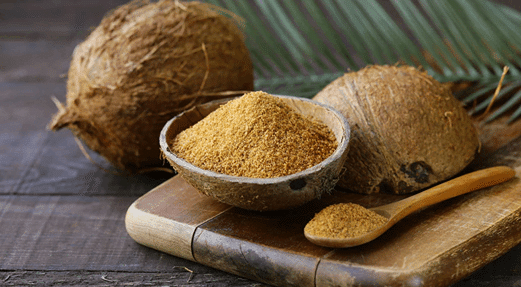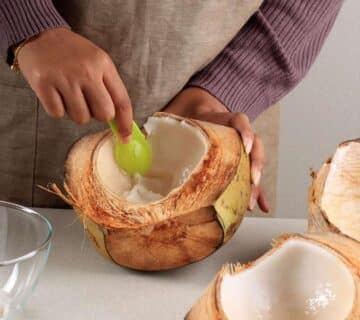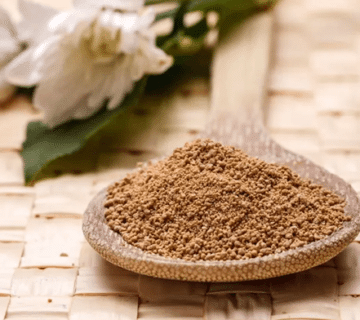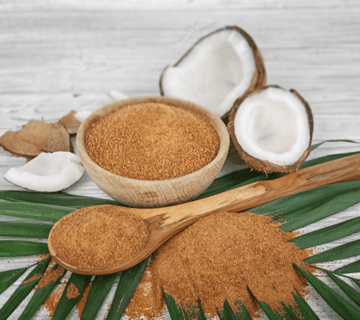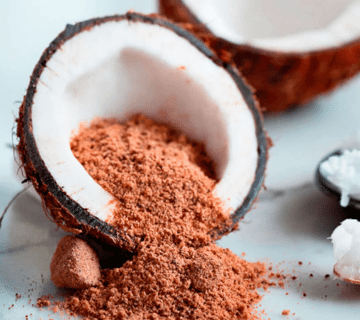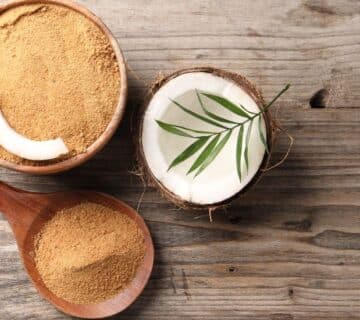Among the varieties of coconut sugar available, organic coconut sugar stands out for its production process that emphasizes sustainability and health benefits. In Indonesia, where coconut palm trees flourish, the art of making organic coconut sugar has been perfected over generations, blending traditional methods with modern technology.
Let’s delve into the fascinating process of creating organic coconut sugar from Sari Coconut and explore its benefits for health and sustainability.
Getting Know The Coconut Sugar Making Process
Producing coconut sugar can result in a valuable product derived from the sap of coconut blossoms. This process naturally involves heat evaporation to transform the liquid sap into solid sugar granules. For a deeper understanding, here’s a further explanation of coconut sugar making process:
1. Selecting Mature Trees for Tapping
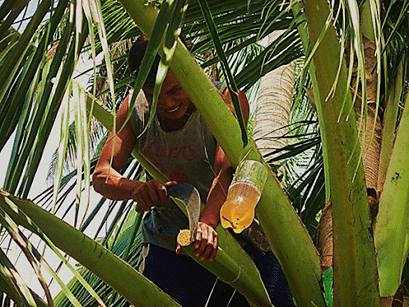
The coconut sugar making process starts with choosing healthy coconut trees with unopened inflorescences suitable for tapping. Then move to the bending process where people will bend the mature unopened inflorescences downwards for a week to facilitate sap flow.
Then the inflorescences will be securely tied with plastic twine and gently pulled downwards. People usually use a sharp knife to tap the inflorescences and make incisions of at least 6 mm to allow sap flow. Cutting the tip of the inflorescence will initiate the sap flow.
2. Collecting Coconut Sap
After tapping, you can collect the sap oozing from the inflorescences using plastic vessels. The collected sap typically contains 12–18% sugar content and is rich in amino acids, minerals, and vitamins.
To prevent fermentation, it is advisable to begin sap collection five hours after tapping. As references, an approximately 850 liters of sap can produce 100 kilograms of sugar.
3. Evaporating the Sap

Next phase is evaporating the sap. It begins with boiling the collected sap up to 115°C using a brick-fabricated oven known as a “pugon.” The oven includes an improvised chimney to release smoke and ensure odor-free sugar.
Then you can remove scum during boiling to prevent dark residue formation on the final product. Boil the sap for 3–4 hours to remove water and concentrate the sugar content.
4. Converting Sap Syrup to Coconut Sugar
In this phase, the boiled sap will be transferred to a food-grade stainless steel wok as it thickens into syrup. The syrup will be continuously stirred to prevent burning and encourage granulation. Stirring introduces air which aids gradual cooling and granulation. Next step is to remove the wok from heat and continue stirring until sugar granules form.
5. Sieving and Drying the Coconut Sugar
The next step of the coconut sugar making process is to allow the sugar to cool and press to break up lumps. You can also sieve the sugar to ensure uniform particle size and quality. The sugar granules will then be spread on a food-grade stainless steel tray and air-dry for one hour to reduce moisture content.
6. Weighing and Packaging
Weighing and packaging process is where you will transfer the sugar to a large container and store overnight. Certified coconut sugar suppliers like Sari Coconut usually weigh and pack the sugar into commercially available transparent polyethylene plastic bags.
Technology of Coconut Sugar Making Process in Indonesia
Indonesia, as one of the largest producers of coconut sugar, has embraced both traditional and modern technologies to enhance the efficiency and sustainability of the coconut sugar making process.
Traditional methods such as tapping and boiling remain integral to the process, preserving the authenticity and flavor of the final product. However, advancements in technology have allowed for greater precision and consistency in production.
It all starts with getting the sweet liquid, called coconut nira, from certain plants like coconut, palm, and Siwalan. This nira comes from the blossoms of these plants before they fully bloom. To obtain nira, people will carefully cut the edges of these blossoms which are then boiled to make coconut sugar.
The main idea behind making coconut sugar in Indonesia is to boil down the nira until only the sugary parts are left. They usually do this in wide frying pans over a fire to speed things up.
In the past, making coconut sugar was tough since people had to stir the boiling nira by hand, and they used firewood to heat everything. They also used bamboo for making sugar molds, which wasn’t very hygienic.
Nowadays, they use machines to stir the nira, making the process easier and the sugar better. They also use gas stoves instead of firewood, which is cleaner and works better. And they use aluminum molds for shaping the sugar, making it cleaner and smoother.
By using the right technology, like control systems, they can make coconut sugar faster and better. This means they can control how the nira is stirred and heated, making sure the sugar turns out great.
The way Indonesian coconut sugar suppliers make coconut sugar shows a mix of old traditions and new ideas. With better machines and methods, they’ve made coconut sugar production faster, cleaner, and better quality. This shows how Indonesia is a top producer of top-notch organic coconut sugar.
Interested in Buying Organic Coconut Sugar?
The process of making organic coconut sugar from Sari Coconut involves a delicate balance of tradition and technology. Indonesia’s rich agricultural heritage and commitment to sustainability have positioned organic coconut sugar as a sought-after ingredient in the global market.
With its health benefits and versatility, organic coconut sugar continues to inspire innovation in the food and beverage industry while championing environmental stewardship.
For those seeking to incorporate coconut sugar into their products, Sari Coconut stands as the optimal choice. As a leading supplier of coconut derivatives products, Sari Coconut provides high-quality coconut sugar and other derivatives sourced from Indonesia, ensuring top-notch quality and authenticity.
With global shipping capabilities, Sari Coconut remains the premier certified supplier of Coconut Derivatives Products, bridging the gap between quality and convenience for businesses worldwide. Contact Sari Coconut and place your order right away!
FAQs
1. Is organic coconut sugar healthier than refined sugar?
Yes, organic coconut sugar contains vitamins, minerals, and antioxidants not found in refined sugars. It also has a lower glycemic index, making it a better option for blood sugar management.
2. Can organic coconut sugar be used in baking?
Absolutely! Organic coconut sugar adds a rich, caramel-like flavor to baked goods and can be used as a direct substitute for refined sugar in most recipes.
3. Is organic coconut sugar sustainable?
Yes, organic coconut sugar production promotes sustainability by supporting local economies and preserving biodiversity in coconut-growing regions.

